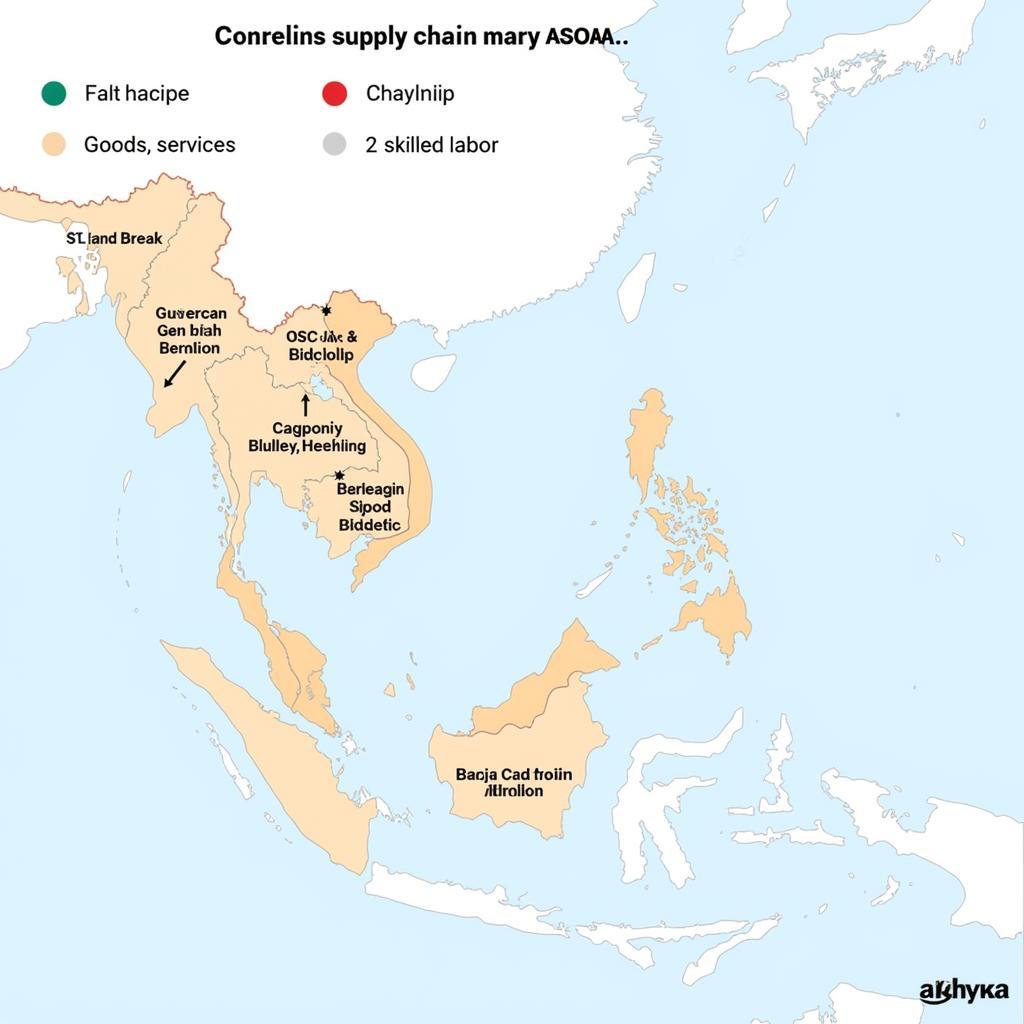The Association of Southeast Asian Nations (ASEAN) has emerged as a dynamic force in the global economy. A key driver of this growth is ASEAN economic integration, a strategic endeavor aimed at creating a single market and production base. This article delves into the multifaceted advantages of ASEAN economic integration, examining its impact on businesses, consumers, and the region as a whole.
Fostering Trade and Investment: A Gateway to Growth
One of the most significant advantages of ASEAN economic integration is the boost it provides to trade and investment. By reducing tariffs and non-tariff barriers, ASEAN has created a more conducive environment for businesses to thrive.
 Reduced Tariffs in ASEAN
Reduced Tariffs in ASEAN
The ASEAN Free Trade Area (AFTA), established in 1992, has been instrumental in lowering tariffs on intra-ASEAN trade to almost zero. This has led to a surge in trade volume, fostering economic growth and creating new opportunities for businesses of all sizes.
“ASEAN economic integration has been a game-changer for our company,” says Sarah Lim, CEO of a Malaysian textile company. “The reduced tariffs have allowed us to expand our operations into neighboring countries, tapping into new markets and expanding our customer base.”
Enhancing Competitiveness: A Level Playing Field
ASEAN economic integration not only facilitates trade within the region but also enhances the global competitiveness of ASEAN businesses. By harmonizing standards and regulations, ASEAN creates a level playing field for businesses, fostering innovation and efficiency.
 ASEAN Supply Chain Integration
ASEAN Supply Chain Integration
Moreover, ASEAN economic integration encourages foreign direct investment (FDI) by providing investors with a larger and more integrated market. This influx of FDI brings in capital, technology, and expertise, further boosting the competitiveness of ASEAN businesses.
Empowering Consumers: A Wider Choice, Lower Costs
The benefits of ASEAN economic integration extend beyond businesses to consumers. With increased competition and lower trade barriers, consumers enjoy a wider choice of goods and services at more competitive prices.
For instance, consumers in Singapore can now purchase affordable and high-quality agricultural products from Thailand, while Vietnamese consumers have access to a wider range of electronics and consumer goods from Malaysia. This increased consumer welfare contributes to a higher standard of living across the region.
Promoting Regional Stability: A Shared Vision for Prosperity
Beyond its economic merits, ASEAN economic integration also plays a crucial role in promoting regional peace and stability. By fostering closer economic ties, ASEAN member states build a shared interest in each other’s success, reducing the likelihood of conflict.
Furthermore, ASEAN economic integration promotes dialogue and cooperation on various fronts, including political and security issues. This collaborative approach has been instrumental in addressing regional challenges and maintaining peace and stability in Southeast Asia.
Conclusion: A Brighter Future for ASEAN
The advantages of ASEAN economic integration are undeniable. From boosting trade and investment to empowering consumers and promoting regional stability, ASEAN economic integration has been a cornerstone of the region’s remarkable growth story.
As ASEAN continues to deepen its economic integration, the region is well-positioned to unlock new levels of prosperity and emerge as a leading force in the global economy. If you’re seeking to expand your business or simply learn more about the exciting opportunities in Southeast Asia, understanding the advantages of ASEAN economic integration is essential.
FAQs: Your Questions About ASEAN Economic Integration Answered
1. What is the ASEAN Economic Community (AEC)?
The AEC is a major pillar of ASEAN, aiming to create a single market and production base characterized by the free flow of goods, services, investment, capital, and skilled labor.
2. How does ASEAN economic integration benefit small and medium-sized enterprises (SMEs)?
ASEAN economic integration provides SMEs with access to a larger market, reduced trade barriers, and opportunities to participate in regional supply chains, fostering growth and competitiveness.
3. What are the challenges of ASEAN economic integration?
Challenges include narrowing the development gap between member states, addressing non-tariff barriers, and ensuring the equitable distribution of benefits.
4. What is the role of digitalization in ASEAN economic integration?
Digitalization plays a crucial role in facilitating cross-border trade, promoting financial inclusion, and empowering businesses, particularly SMEs, to participate in the digital economy.
5. How can I learn more about ASEAN economic integration?
For more insights on ASEAN economic integration, explore our resources on ACE ASEAN, ASE Group Global Malaysia, and the ASEAN-Australia-New Zealand Free Trade Agreement countries.
Need further assistance? Contact us at 0369020373, email us at aseanmediadirectory@gmail.com, or visit us at Thon Ngoc Lien, Hiep Hoa, Bac Giang, Vietnam. Our dedicated customer support team is available 24/7 to assist you.

